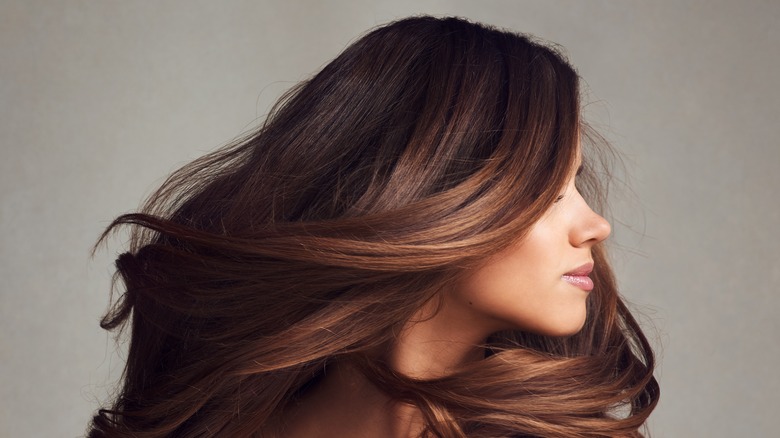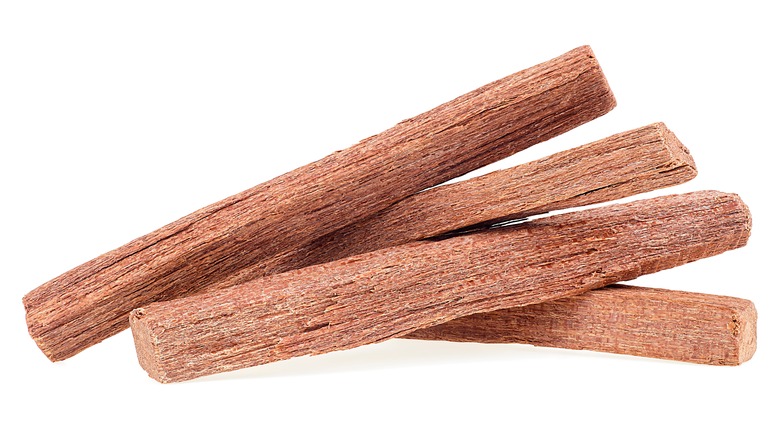Your Hair Has A Sense Of Smell And You Can Use It For Healthier Strands
Everyone wants healthy hair and if you already have it, you want to keep it that way. While there are several known ways to get your hair longer and thicker, new hair care products with supposed breakthroughs keep popping up based on how your hair grows, restores, and repairs. Now, some experts are looking at how your hair's sense of smell can help hair flourish.
According to a study in Nature Communications, your hair has a sense of smell. While hair doesn't take in smell the way your nose does in the sense that you experience the odor, hair follicles have a strong preference for scents.
Hair follicles apparently highly prefer the scent of sandalwood and when they are in proximity to sandalwood, they insert themselves more tightly into the scalp and fall out less. Specifically, it's one particular receptor. "Olfactory receptor OR2AT4 has been shown to stimulate keratinocyte proliferation in the skin," the study explains.
How hair's innate sense of smell may work in haircare products
Individual follicles can be in any one of the three hair growth stages, anagen (growth), catagen (transition), or telogen (rest). In addition, follicles tend to be in one of the stages in a dominant proportion. One of the lead co-authors of the study, board-certified dermatologist Dr. Fatima Fahs, says olfactory receptors lengthen the cycle of hair growth. "A normal patient should have about five to 10 percent of their hairs in this telogen phase," Fahs told Well + Good.
However, hair is regularly compromised by ongoing bodily changes such as pregnancy, sickness, and stress. "Instead of all those hairs being in that normal growth phase, a lot of them transition into that falling out phase," Fahs explained. "And so suddenly you're getting clumps and clumps of hair and it's very distressing."
Consequently, when you introduce sandalwood-based products to hair follicles like Nioxin Ultimate Power Serum, which Fahs works with, it causes them to settle in and take root. "This is kind of a newer term, but hair anchorage pretty much means that we are locking the hair into the root and holding it tightly," Fahs said. "It's allowing the scalp to have an increased root resistance so that you don't have excessive shedding."
More studies need to be done on how olfactory receptors may treat hair loss
Though sandalwood may encourage hair growth, a special formulation is needed in order for it to help. According to senior study author Dr. Ralf Paus, only the synthetic version of the sandalwood scent will work (via Live Science).
That is because natural sandalwood won't bind with olfactory receptor OR2AT4 so other molecules need to be formulated along with the sandalwood in order for it to work correctly.
Though the study shows positive findings, more testing needs to be done in terms of using it as a hair loss treatment. Hair loss specialist and dermatologist Dr. Amy McMichael told Live Science, "The science is interesting and well-executed, but only as an early signal of possible involvement of olfactory receptors in the very complicated process of hair growth." She maintains that further research is needed, saying, "While these findings are very exciting, they are too far removed from treating an actual patient."


